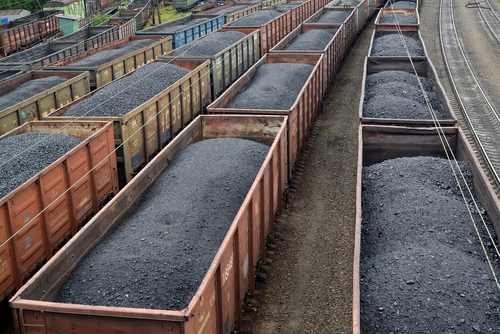According to a report by S&P Global, the market for aluminum and alumina, which is used in the production of the raw material, may experience volatility in the face of global production challenges in Q4. Concerns about rising energy prices, declining demand and supply chain disruptions are putting pressure on the prices of raw materials associated with industrial production like steel and aluminum. Downstream aluminum demand indications are also very mixed due to slowing real estate and infrastructure investment in an environment of global economic slowdown:
- China's aluminum market has experienced problems related to energy consumption and environmental guidelines. China's raw material smelters have been denied access to offshore markets by arbitrage problems that began as early as the first quarter of the year. Manufacturers are still concerned about the uncertain impact of winter and problems with China's vital hydropower on the conditions of the domestic aluminum industry;
![]()
China's aluminum exports are declining, and exports to Russia have also declined markedly. Source: S&P Global
- The price of alumina in the Middle Kingdom had been gaining in August thanks to production cuts at refineries and cost pressures, but eventually fell to its lowest level in years in Q3 due to the suspension of production at key Chinese aluminum smelters in Yunnan and Sichuan. The smelters had to suspend operations due to hydropower shortages. China's alumina exports declined quarter-on-quarter in the third quarter of the year, with volumes diverted to the domestic Chinese market, putting additional supply pressure on alumina, and naturally aluminum exports also fell. The global market may be further burdened by reduced alumina production in Europe, as a result of unprecedentedly high energy prices. Additional supply puts additional pressure on the aluminum price; Indonesia's Bintan Alumina started production in September and increased its existing capacity to 2 million mt per year;
 With limited exports, the price of Chinese aluminum has limited volatility in recent months. Source: S&P Global
With limited exports, the price of Chinese aluminum has limited volatility in recent months. Source: S&P Global
- The price of aluminum in Australia has also fluctuated through production problems. The cost of alumina was volatile in September adding to delays in deliveries, following heavy rains in the western part of the country. The index of prices paid for aluminum can be geographically dependent. For example, prices from Brazil were quoted in early October at a nearly $30 premium over Australian raw material. Aluminum prices on the Australian exchange eventually fell to yearly lows in September. According to S&P Global sources, the maintenance schedule for Australian refineries is still tight and has not recovered from the pandemic;
- Analysts had expected a decline in Chinese refinery operations in the north of the country due to bauxite shortages, but this scenario did not materialize. China's bauxite imports rose 23.5% year-on-year, amounting to 10.7 million mt in August. According to Chinese traders, aluminum prices will remain volatile at the end of the year through production cuts and material problems during the winter season. China's aluminum production, during the summer, grew by up to nearly 10% on an annualized basis however, smelter cutbacks in Yunnan and Sichuan have halted further growth. Idle smelters will require expenditures to get them up and running, and energy prices are likely to rise again in Q4 due to China's tight hydropower supply, as seen in rising Chinese coal prices, among other factors;
- Uncertain supply and demand balances in Asia could strain aluminum smelters around the world. European refiners are already operating at reduced capacity, while others are evaluating margin opportunities in an environment of galloping energy prices, according to a report by analysts at S&P Global. The plight includes the San Ciprian plant in Spain which has cut production by 50% since the beginning of October, and Ireland's Aughinish Alumina refinery where production cuts are now at 10% on an annualized basis. Norwegian giant Norsk Hydro has also decided to cut aluminum production by about 110,000 to as much as 130,000 mt. Analysts also expect a drop in demand for aluminum beverage cans. Although giants like Pepsico still boast strong sales results, this is mainly due to the transfer of costs to customers. Sales volumes and raw material orders are falling;
- The Atlantic region is likely to continue to be condemned to importing alumina from the Pacific Rim countries, which could further impact slowing aluminum production at European refineries. The main 'Atlantic' refinery Jamalco, located in Jamaica, still has not moved to full production. The plants will be forced in such a situation to pay a premium to import Australian raw material, i.e. alumina necessary to continue domestic aluminum production. The market situation may be further complicated by the decision to further reduce alumina production in Australia;
- The reduction in aluminum smelter operations and the resulting drop in alumina demand portend a likely volatile fourth quarter for aluminum prices. The raw material could deepen the sell-off as the global recession continues and the slowdown caused by a tough energy market and a drastic drop in construction demand. Threats to aluminum demand are still high inflation and interest rates, which are rising unprecedentedly in the US, Europe, the UK and Australia. Growth in the world's largest economies is slowing, which is reflected in raw material prices.

Aluminum, D1 interval. The price is in a downtrend. Recently, we have seen a formation resembling a double top, in the vicinity of $2300, which, combined with the still imposing pressure of the 'cross of death', i.e. the intersection of the SMA50 and SMA200 averages from May this year, may herald a deepening of the commodity's discount. Source: xStation5
Will the Fed minutes confirm a pause in further easing? 🔎
Daily summary: Wall Street tries to rebound 📈Amazon and Microsoft under pressure of Rotschild & Co Redburn
Cocoa tries to stabilize after autumn sell-off 📌
Market worries persist, but is the worst of the sell off behind us?
This content has been created by XTB S.A. This service is provided by XTB S.A., with its registered office in Warsaw, at Prosta 67, 00-838 Warsaw, Poland, entered in the register of entrepreneurs of the National Court Register (Krajowy Rejestr Sądowy) conducted by District Court for the Capital City of Warsaw, XII Commercial Division of the National Court Register under KRS number 0000217580, REGON number 015803782 and Tax Identification Number (NIP) 527-24-43-955, with the fully paid up share capital in the amount of PLN 5.869.181,75. XTB S.A. conducts brokerage activities on the basis of the license granted by Polish Securities and Exchange Commission on 8th November 2005 No. DDM-M-4021-57-1/2005 and is supervised by Polish Supervision Authority.



